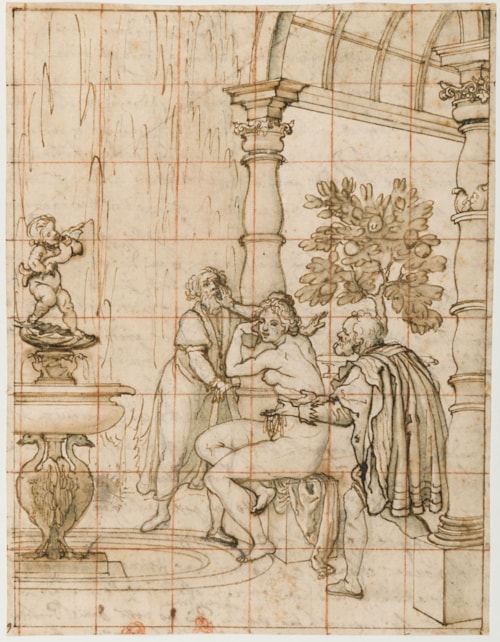
Sigismondo COCCAPANI
Florence 1583 - Florence 1643
Biography
The son of a goldsmith, Sigismondo Coccapani studied with the architect Bernardo Buontalenti and the painter Ludovico Cardi, known as Cigoli. He was one of Cigoli’s last pupils, and was the only Florentine apprentice working closely with the master on his late Roman commissions. Indeed, as Miles Chappell has noted, Coccapani ‘could be described as the most dedicated and also the most dependent of Cigoli’s disciples.’ Between 1610 and 1612 he assisted Cigoli on the fresco decoration of the dome of the Cappella Paolina in the church of Santa Maria Maggiore in Rome. On his return to Florence, Coccapani began his independent practice and in fact seems to have worked almost exclusively in and around the city for the remainder of his career, painting frescoes, devotional works and mythological pictures. His earliest known independent commission was for a lunette fresco in the large cloister (the chiostro dei morti) of the church of Santissima Annunziata in Florence, painted in 1613. Four years later he completed a painting of Michelangelo Crowned by the Arts for the Casa Buonarroti in Florence, soon followed by an Adoration of the Magi for the church of Santa Maria in Castello in Signa, outside the city. His last known work is the decoration of the Cappella Martelli in the Florentine church of Santi Michele e Gaetano, completed in 1642.
Coccapani’s paintings show his debt to the manner of his master Cigoli, an influence that may also be seen in the relatively few surviving drawings by the younger artist that are known, of which the largest group, numbering around ninety sheets, is today in the Uffizi in Florence. That many more drawings by Coccapani must once have existed, however, is shown by the comments of the Florentine collector and biographer Francesco Maria Niccolò Gabburri, who knew of an album of drawings by the artist that had been sold abroad: ‘un grosso libro, nel quale disegnò ogni sorta di animali, che riuscì cosa di gran pregio, il quale poi fù mandato oltre ai monti.’ The use of blue wash in many of his drawings is a characteristic feature of Coccapani’s draughtsmanship which he adopted from the late compositional studies of Cigoli. Indeed, many of his drawings were once attributed to the elder artist, and many of the most Cigolesque drawings by Coccapani date from the early part of his career, when he was working with his master in Rome, and again at the start of his independent career in Florence.



